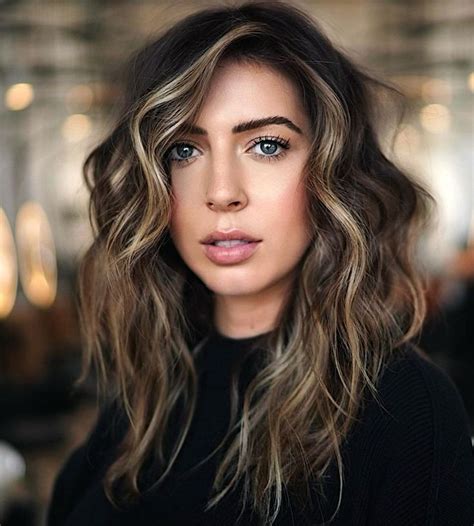Introduction

Hair highlighting is a versatile technique that can enhance your hair’s color, dimension, and texture. While there are numerous variations of highlighting methods, two popular choices are full highlight and partial highlight. Understanding the distinctions between these techniques is crucial to making an informed decision that aligns with your hair goals.
Full Highlight vs. Partial Highlight: A Comparison
1. Area Covered
- Full Highlight: As the name suggests, full highlights cover the entire head of hair, from the roots to the tips.
- Partial Highlight: Partial highlights target specific areas of the hair, such as the crown, face-framing layers, or sections around the nape.
2. Number of Foils
- Full Highlight: Requires a substantial number of foils (100-200+) to achieve full coverage.
- Partial Highlight: Typically uses fewer foils (50-100) to create more subtle or concentrated highlights.
3. Maintenance
- Full Highlight: Requires frequent touch-ups (every 6-8 weeks) to maintain even coverage as roots grow out.
- Partial Highlight: Needs less frequent maintenance (every 10-12 weeks) since only specific sections of hair are colored.
4. Cost
- Full Highlight: Generally more expensive due to the larger number of foils and time required.
- Partial Highlight: More affordable than full highlights, but costs can vary depending on the size and number of highlighted sections.
5. Damage
- Both full and partial highlights involve chemical processing, which can cause some hair damage.
- Partial highlights are less damaging than full highlights since they involve fewer chemicals and leave a larger portion of natural hair intact.
6. Styling Versatility
- Full Highlight: Provides maximum flexibility for styling, as the highlighted hair can blend seamlessly with the natural color.
- Partial Highlight: Offers more subtle dimension and can complement specific hairstyles, such as updos, braids, or ponytails.
Benefits of Full Highlights
- Even distribution of color throughout the entire head of hair
- Dramatic color transformation and bolder results
- Ideal for those who want a significant change or to cover gray hair
- Creates a sun-kissed, natural-looking effect
Benefits of Partial Highlights
- Adds subtle color and dimension to specific areas
- Frames the face and enhances facial features
- Suitable for those who want to brighten up their hair without a drastic change
- Requires less maintenance and reduces hair damage
Which Technique is Right for You?
The best highlight technique for you depends on your individual hair goals and preferences. Consider the following factors:
- Hair Length and Density: Partial highlights are more suitable for shorter or finer hair, while full highlights work well on longer or thicker hair.
- Desired Color: Full highlights provide a more dramatic color change, while partial highlights can be customized to create more subtle effects.
- Maintenance Commitment: If you’re willing to visit the salon more frequently for touch-ups, full highlights can maintain a consistent look. For those who prefer less maintenance, partial highlights may be a better option.
- Budget: Partial highlights are generally more affordable than full highlights.
Tips and Tricks
- Discuss your hair goals and expectations thoroughly with your stylist before getting highlights.
- Use high-quality hair care products designed for color-treated hair to maintain the vibrancy and health of your hair.
- Avoid washing your hair too frequently, as it can strip away the color pigments.
- Consider using a color-depositing conditioner or toner to refresh the highlights between appointments.
- If you have curly or coily hair, partial highlights may be a better choice to prevent over-processing.
Conclusion
Both full and partial highlights offer unique benefits and can enhance your hair’s appearance. Understanding the differences between these techniques is essential to making an informed decision that meets your specific needs and desires. Whether you crave a dramatic color transformation or a subtle touch of dimension, highlighting is a versatile and empowering way to express your individuality.
